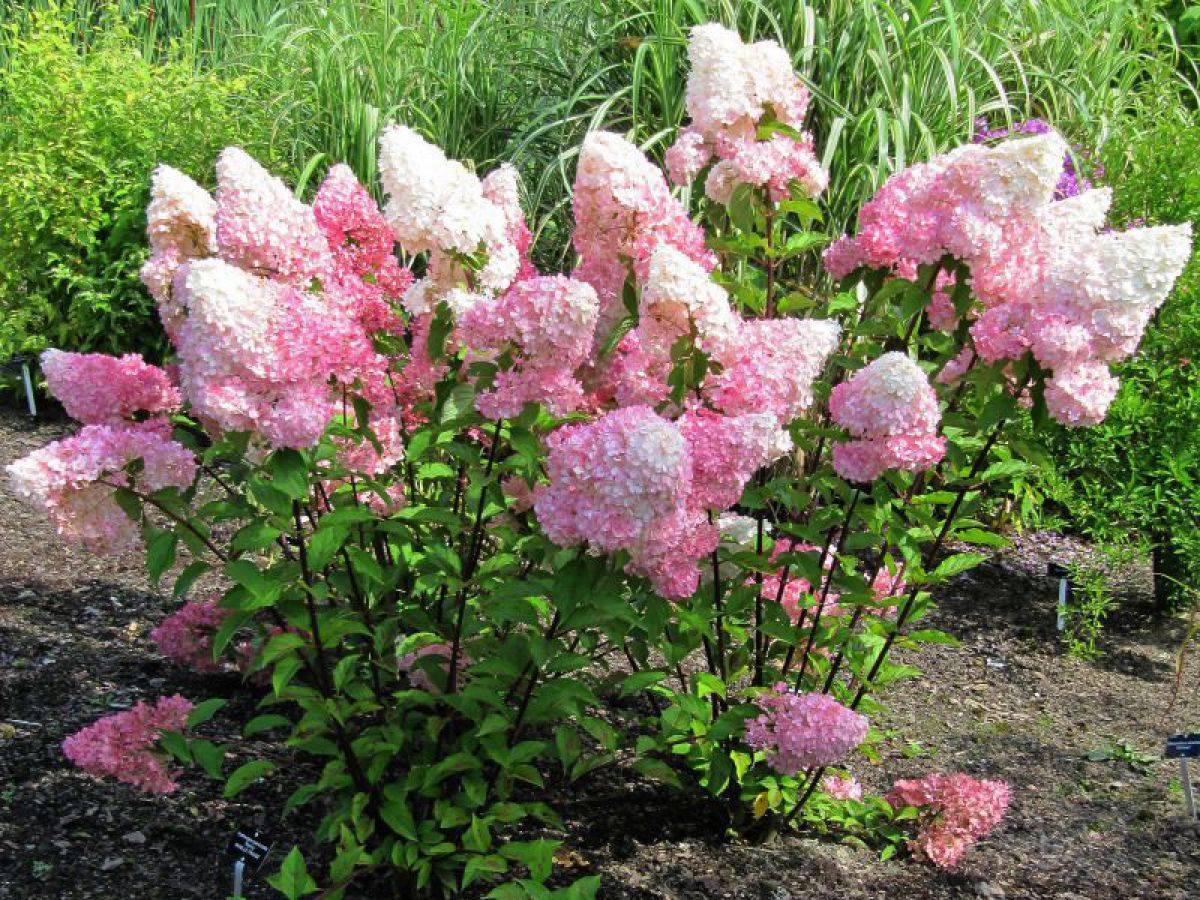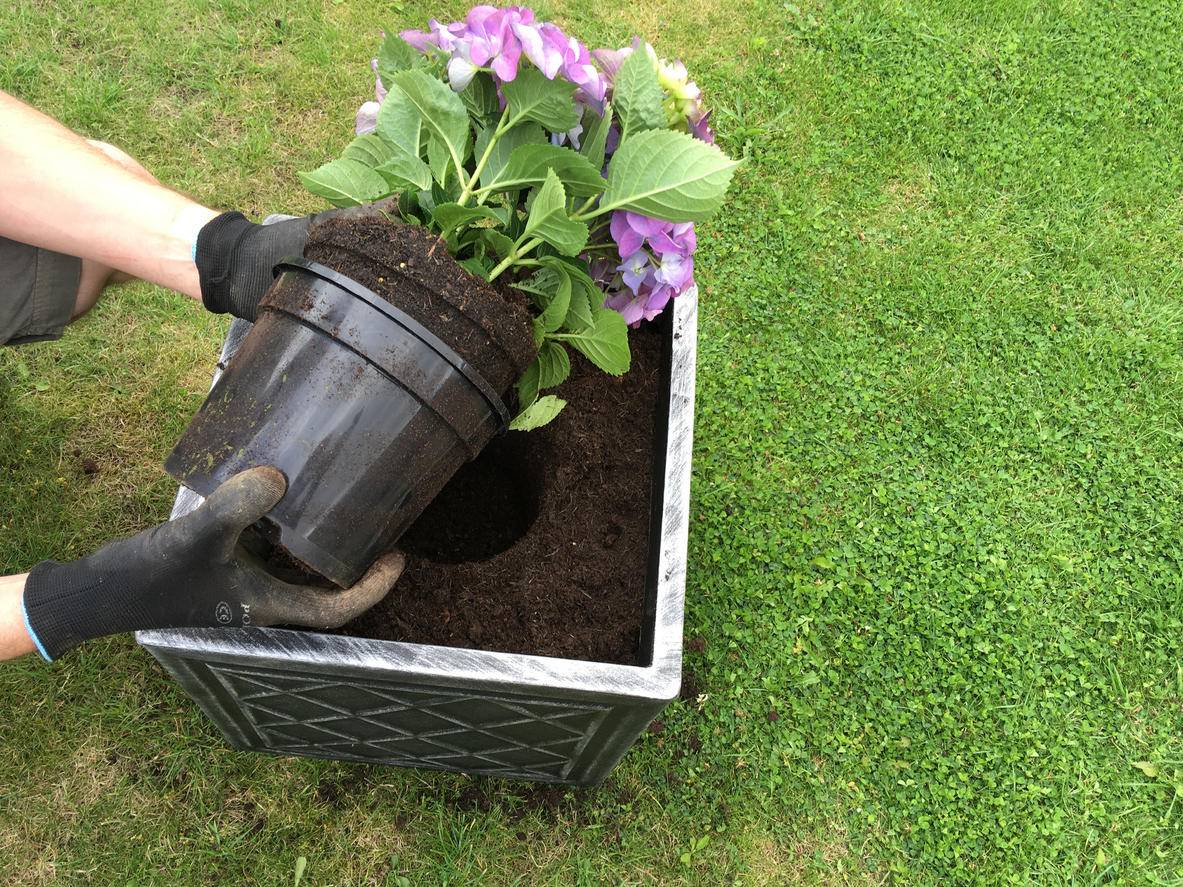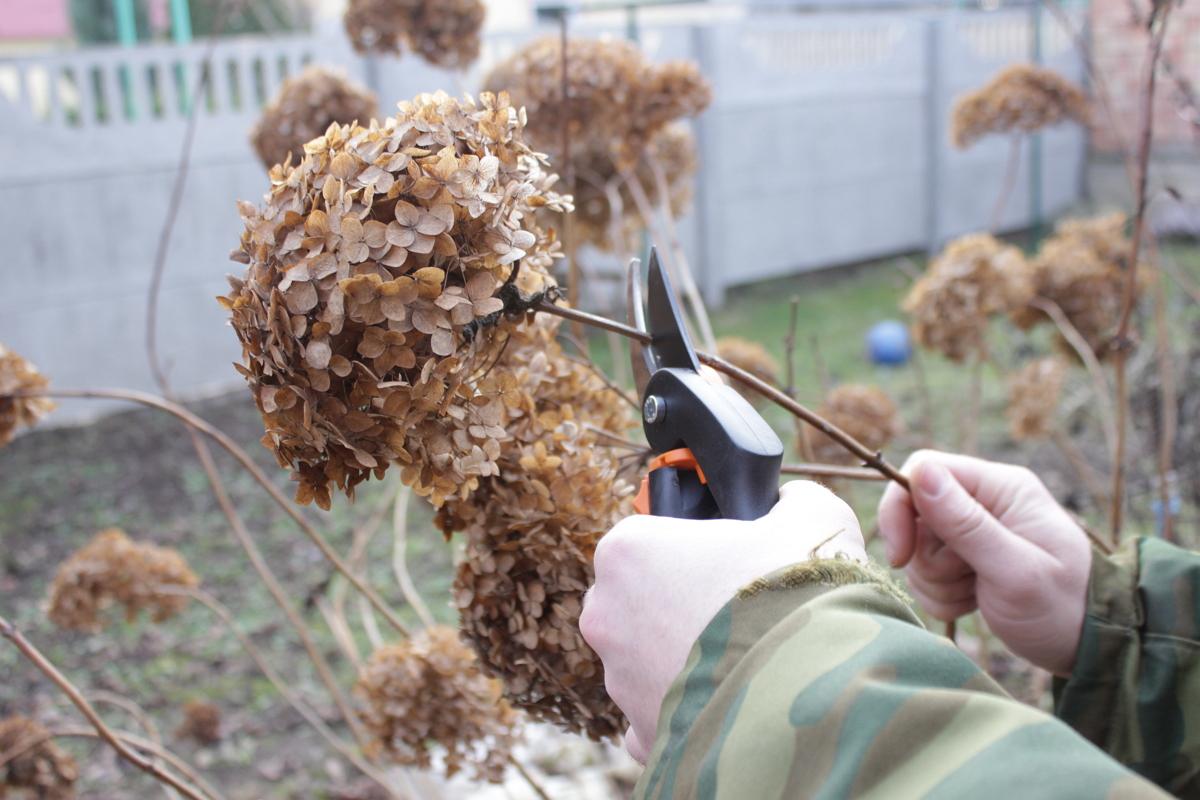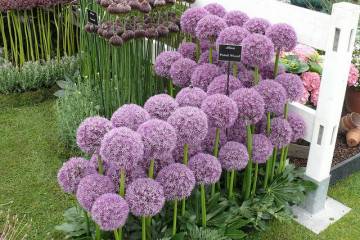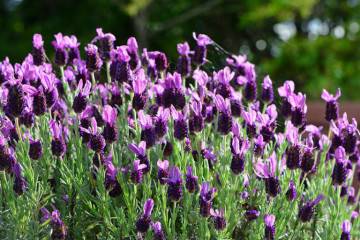Hydrangea Vanilla Freise - planting a flower in the open field, cuttings
Content:
Hydrangea Vanilla Freise (Vanilla Freise) has large lush inflorescences that never tire of pleasing the eyes of amateur gardeners and not in vain are their pride. Large panicle inflorescences fascinate with the play of color: white small flowers at the crown smoothly turn into light pink and almost red at the base. Hydrangea Vanilla Fries in the shape of a panicle and a dense planting of flowers resembles a brush of lilac.
Description of the variety Vanilla Freise
Hydrangea paniculata (Latin Hydrangea paniculata) is gaining popularity again after a long time these beautiful plants were considered old-fashioned. Especially in late summer, when the rest of the flowers have already faded, chic hydrangea panicles set accents in the green garden.
The most popular and widespread are garden and paniculate. For the first time panicle hydrangea was described by F.F. von Siebold in 1829. This type of hydrangea first appeared in Russia in the Moscow region in the Savateevs nursery in 2008.
Hydrangea Vanilla Fries is a bush with a height of 1 to 2.5 m. Plants begin to bloom with vanilla white flowers, which gradually turn in shades from pink to strawberry during the summer, while the top of the pyramidal panicle remains vanilla-white. In color, the panicles resemble a giant portion of strawberry ice cream with cream, hence the name of the variety.
The ability to grow this variety in countries with low average temperatures has made the Vanilla hydrangea popular. According to the stories of the French breeder E. Renaud, the variety was first presented at the Planatarium exhibition in 2006 in Holland and was awarded several prizes.
Hydrangea Vanilla Freise has ovoid leaves of light to medium green color. Flowering time from June to mid-autumn. Pyramid-shaped panicles are great for decorating a room as flowers for a vase, dried panicles can also be used to decorate the interior and make ikebana.
How and where to plant
Planting purchased seedlings is a very important task. Hydrangea paniculata Vanilla Freise grows well in a slightly shaded area on fertile, humus-rich soil. Hydrangea tolerates a large amount of sun well, but provided that the open ground is sufficiently moist. True, it fades faster in sunny places.
Vanille Fraise hydrangea looks great both in a group of plants of the same variety and in combination with other crops. Experts recommend planting plants in early spring or autumn. The most suitable for the Vanilla Freisy hydrangea variety is the south side of the garden with a slight shade.
At the planting site, it is desirable that there are no trees nearby, because they absorb all the moisture around. A hole for planting is dug out with a square 30 cm by 50 cm. At the bottom, be sure to put a drainage layer of small stones, which is covered with a layer of prepared soil. Required acidity up to pH 5.
When placing a seedling in the hole, you need to make sure that the roots do not bend, this will complicate the rooting process. Then you need to add the remains of the prepared soil and water the plant abundantly. This will require 10 liters of water. The root collar should remain above the ground, but the soil around the perimeter can be pressed down with the sole of the shoe to ensure better contact with the roots and facilitate rooting. Then you need to cover the soil around the plant with peat or wet sawdust. This will retain moisture and provide additional nutrients.
The distance between adjacent bushes should be at least 1 m, taking into account the rapid growth of plants and the nutritional area necessary for a comfortable existence. The site for planting plants must be protected from drafts, because the Vanilla hydrangea does not tolerate the wind, which can easily break off heavy inflorescences.
Reproduction of hydrangea
Hydrangea reproduces in two ways. You can bend several lower branches to the ground, fix them and sprinkle the place of contact with the soil with specially prepared soil. The next spring they will take root, they are carefully separated from the trunk of the main plant and transplanted into a specially prepared place.
The second way is propagation by cuttings.
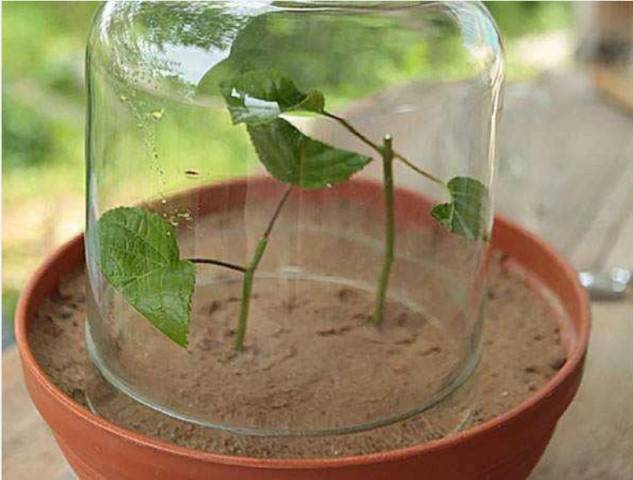
Cuttings will take root better if you cover them with a transparent vessel, creating a favorable microclimate
In the spring, cuttings are cut from new shoots, which are placed in vessels with wet sand. The container is closed with a transparent lid or foil in order to retain moisture, create a favorable temperature environment and at the same time maintain access to light.
The third way is reproduction by dividing the bush. The bush is dug up, divided, depending on the size, into two or three parts, which are planted in compliance with all the rules for preparing seedlings for planting.
Care for panicle hydrangea
In care, this variety is undemanding, the main thing is to take into account some of the nuances.
How and how much to water
Watering is necessary as needed, the ground should always be moist, this is an important factor for long and abundant flowering. It is best to use settled rainwater for irrigation.
Top dressing and fertilization
In the spring, when the plants start to grow, it is recommended to mulch the ground around. This will conserve moisture and give the plant the nutrients it needs to grow.
To form the crown, you can feed it with mineral fertilizers - nitrate or superphosphate. The first feeding is carried out before the start of growth, the second - at the beginning of bud setting.
Pruning
Hydrangea bushes are pruned twice a year. Hydrangea Vanilla Freise forms flower panicles only on shoots grown this year. In this regard, in order to achieve abundant flowering, it is necessary to cut it in the spring. At the same time, you cannot cut off too much, no more than two-thirds of the length of the branch, otherwise the growth of new shoots may slow down. Pruning is done above the live buds, from which new flower shoots will later develop.
In the fall, dried panicles are cut to avoid breaking shoots under the influence of strong winds or from the weight of snow. With proper pruning, Vanilla Fraze will bloom for a long time and please the eye.
What is sick hydrangea Vanille Fraise
Panicle hydrangea is resistant to diseases and pests, but it also requires attention and care. Already when buying seedlings, you need to pay attention to the presence of damage on the leaves and shoots, indicating the presence of ailments and parasites.
Why doesn't the flower bloom
It happens that, having bought seedlings, the gardener follows all the recommendations for soil preparation and planting, shelters the plants from direct sun and wind, but cannot achieve flowering. In this case, the cause can be diseases that weaken the immunity of the plant, which simply does not have the strength to form flower shoots.
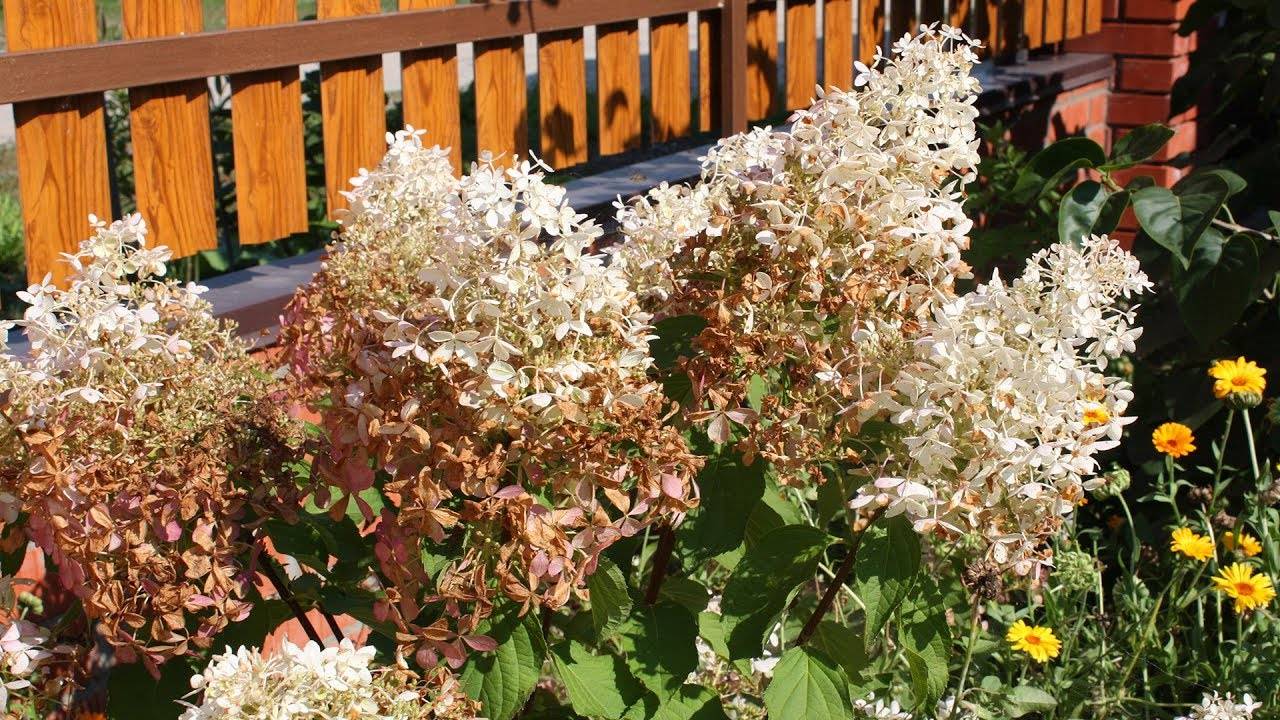
The reason for the drying of inflorescences can be unfavorable environmental conditions, as well as diseases and pests.
There are several types of diseases according to the type of pathogen. Fungal diseases - white rot and gray rot - provoke the pathogen in the soil. A darkening of the stem and the formation of a white or gray coating may be a sign. Fungicides are used against fungal diseases; when processing plants, you must carefully read the instructions for use.
Rust infects plants if they are very close to each other. High nitrogen content in the soil can also cause disease. If the plants are planted at the recommended distance, they must be treated with copper oxychloride or fungicides.
Preparing for winter
Vanilla Freise hydrangeas are characterized by increased cold resistance, therefore, only 1-2-year-old, freshly planted plants need to be sheltered for the winter. They are covered with burlap or foil to protect them from frost.
Seeing the delicate inflorescences of this variety of hydrangea, it is impossible to remain indifferent. Gardeners who love Vanilla Freise will enjoy the process of planting and caring for a new plant, which in turn will pay off with active growth and long, abundant flowering.
